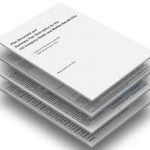One of my favorite movie scenes in Donnie Brasco is when Lefty and the crew bust open city parking meters for dimes because they’ve got to make their weekly nut. Sometimes, I feel like ERISA litigation is the same thing, plaintiffs’ attorneys are searching for loose change in the form of new fiduciary causes of action. The latest example? Becerra v. Bank of America Corp. On Tuesday, Judge Max Cogburn Jr. in the Western District of North Carolina denied Bank of America’s motion to dismiss a case that cuts right into a sore spot for plan sponsors: the use of forfeitures. The plaintiffs claim Bank of America improperly used forfeited plan assets—millions of dollars’ worth, to offset its own future contributions instead of paying plan expenses. In their view, that’s not just bad optics, it’s a fiduciary breach under ERISA.
The Fiduciary Question
Bank of America argued that its use of forfeitures was a “settlor” decision, outside the scope of ERISA’s fiduciary rules. That’s been the line many plan sponsors have leaned on when it comes to plan design decisions. But Judge Cogburn wasn’t buying it—at least not yet. He held that the plaintiffs had plausibly alleged a breach of fiduciary duty by claiming plan assets were used to reduce employer contributions, not for the exclusive benefit of participants.
It’s worth noting that courts haven’t spoken with one voice on this issue. Some judges have accepted the “settlor” argument. Others, like Cogburn here, have kept the door open for plaintiffs to proceed. The Department of Labor hasn’t helped by filing an amicus brief in other forfeiture cases that supports employers, further muddying the waters.
Anti-Inurement and Prohibited Transactions
The decision also breathes life into claims under ERISA’s anti-inurement clause and prohibited transactions rule. The anti-inurement provision says plan assets can’t inure to the benefit of the employer. Plaintiffs allege that using forfeitures to lower contributions is exactly that. On prohibited transactions, Cogburn noted that the complaint plausibly alleged “self-dealing”—using plan assets in a way that benefits the employer.
If those claims stick, it could be costly. With a $63 billion plan covering over 250,000 participants, Bank of America is a very big target.
What It Means for Plan Sponsors
This isn’t a ruling on the merits, but it’s a reminder that forfeitures are a landmine. The regulations allow forfeitures to be used to pay plan expenses or to reduce future employer contributions. Many sponsors, and many plan documents, lean on that second option. But cases like Becerra show that just because the regulations say you can doesn’t mean plaintiffs’ lawyers won’t try to argue you shouldn’t.
This is why I tell plan sponsors that “doing the right thing” isn’t always enough—you have to be able to show it. Document your forfeiture policy, make sure your plan document is crystal clear,
and when in doubt, consider applying forfeitures toward legitimate plan expenses. That’s a harder target for plaintiffs to attack.
Final Bell
The Bank of America case is just getting started, but it’s another skirmish in the larger war over how far fiduciary liability extends. Until we get more consistent rulings—or better guidance from the DOL, plan sponsors need to treat forfeitures with the same care they’d treat investment lineups or fee arrangements.
Because when it comes to ERISA litigation, the plaintiffs’ bar is going to keep shaking every meter, looking for dimes.







